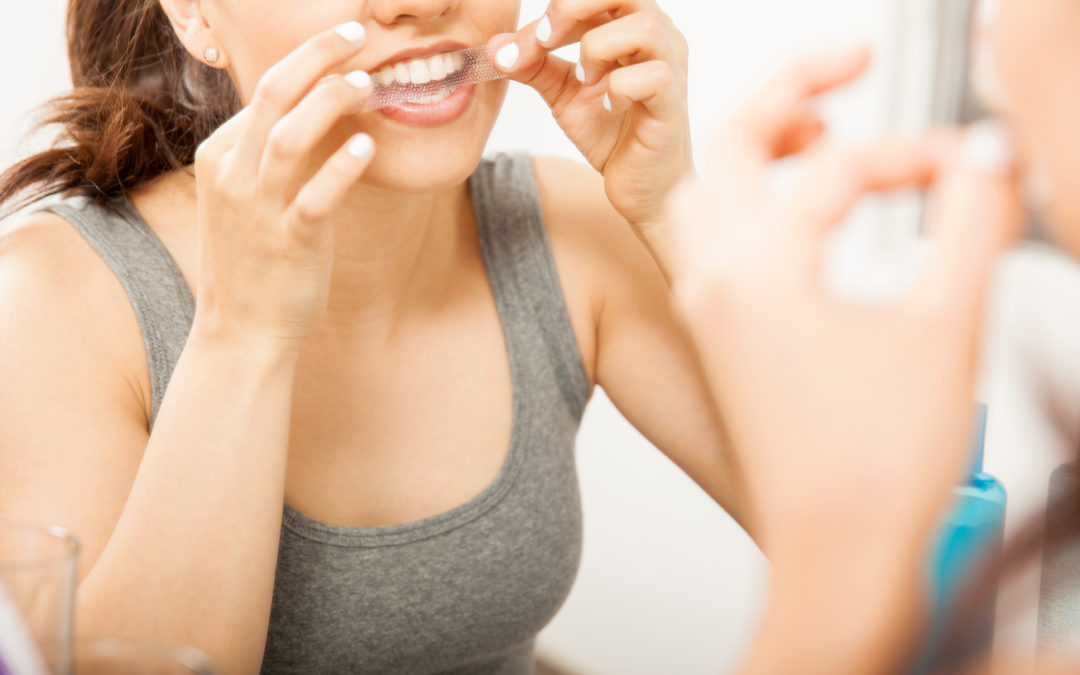In response to the multitude of recent (April 9-11, 2019) articles titled, “Teeth-whitening strips could harm layer of teeth, studies suggest”, Dr. Rod Kurthy offers his insight and response.
First, I’d like to address my continuing distrust of the news media, and this article is an excellent example of the media’s tendency to “sensationalize” any possible topic with little to no background research of their own, simply to startle the public and gain viewer response.
These articles all addressed a recent presentation made at a scientific meeting. At these scientific meetings, many, many presentations are made, usually based on early research of various topics. In this case, the research was performed by undergraduate students at Stockton University, which by the way, does not have a dental school.
The team of undergraduate students was led by chemistry teacher Kelly A. Keenan, who has written only two research papers, neither of which have ever been accepted for publishing by any journal, let alone scientific journal; and neither of which had anything to do with dental topics. In fact, it appears she has never had any experience with any sort of dental related topics.
Keenan and her students claim that the peroxide in teeth whitening strips may be harmful to teeth by altering some of the proteins deep within the teeth. This knowledge really isn’t something new, as they’re claiming.
Their claims stated that peroxide breaks up long-chain protein molecules into smaller pieces. That’s it. That’s the extent of their study. They learned and showed absolutely nothing else. Either Keenan and her students, or the media reporters, hypothesized that this means likely harm to teeth, with no further evidence to back up this assertion.
The finding that perhydroxyl radicals produced by peroxide break up long-chain organic molecules into smaller molecules has been understood for many years. In fact, that is one of the primary ways in which peroxide based teeth whitening products, including teeth-whitening strips, lighten teeth.
This study was seriously flawed, and certainly not worthy of the sensationalism seen in the myriad of news media articles that have appeared. First, the studies were not carried out in human mouths, or even animal mouths. To really test the validity, what would have normally been done is to have real people participate. The scientific standard would have been:
- To have people needing orthodontic treatment, where all 4 first bicuspids were scheduled to be removed prior to having orthodontic treatment (which is not uncommon), and use of teeth-whitening strips on only one side of their mouths.
After completion of the whitening process on one side of the mouth, the four first bicuspid teeth would have been removed, and those teeth scientifically studied. That would have allowed comparison of the teeth from the side of the mouth that was whitened, to the teeth from the opposite side of the mouth that were not whitened. Of course, after the study, the whitening on the “other side” of the mouth would have been performed to even-out the whiteness for these participants.
- But instead of using accepted and bonafide scientific research methodology, Keenan’s students at Stockton University simply used, “human teeth, setting them in plastic foam to simulate their placement in the gums, then adding the whitening strips as instructed”, and “The teeth were also suspended in artificial saliva.” Keenan went on to state, “I tried to make it as realistic as possible”.
I’m sorry, but…. REALLY?! <with sarcastic tone> You “tried to make it as realistic as possible”?! Artificial saliva typically does not have all of the elements truly found in saliva, such as the exceptionally critical antioxidant enzymes like glutathione peroxidase, which has a huge impact on peroxide, virtually destroying peroxide on contact. And you “simulated” human bone, covered by human gingival tissue, by putting teeth in “plastic foam”???
For any “in vitro” (outside of the body) scientific research, it is imperative to accurately and fully reproduce the true natural environment in the mouth or anywhere else in the body that you’re researching. In human mouth studies like this one, “artificial saliva” should not have been used. “Real” human saliva should have been used, which would not have been difficult at all.
Normally human saliva would have been secured by having study participants stimulate their own saliva production (such as chewing on some soft object that doesn’t dissolve or contaminate the saliva) and then spit the saliva into cups. This genuine human saliva would have absolutely all of the elements truly found in the human mouth.
Nonetheless, let’s look at the findings of the research and talk about what, if any, impact it has on the safety of teeth whitening, if indeed the research findings are correct.
There are four, and only four, things that dentists and anyone else could want from their natural teeth:
- The teeth should have an appearance that is as cosmetic as the patient demands.
- Teeth should be comfortable and pain-free. Other than occasional transient sensitivity of the teeth during whitening, which disappears after whitening, whitening has no impact on teeth comfort.
- Teeth should be functional. They should chew food and perform any normal function well.
- Teeth should last a lifetime.
After millions and millions of teeth whitening procedures, including high quality over-the-counter and professional teeth whitening products, for the past few decades, teeth whitening has never been shown to have an adverse effect on teeth (any of the above 4 statements) whatsoever.
Certainly, if the alteration of long-chain proteins into smaller proteins were to have any negative effect, we would have seen it by now. Also, as I previously stated, we researchers have known that peroxide breaks long-chain organic molecules into smaller molecules for many years. But we also know that these molecules are somewhat like magnets, and after whitening, the smaller molecules start re-attaching again.
I’m most certainly not the only dental researcher to feel this way. In fact, Dr. Gordon Christensen is considered to be the most well-known dentist in the world today, as well as the most respected around the world. In response to the above “research”, Dr. Christensen stated, “There is no question that there is some measurable influence on dentin caused by hydrogen peroxide, however, the fact that millions of people have bleached their teeth on a routine basis for decades should lead us to observe that there can’t be a major negative influence.“
Dr. Damon Adams, editor in chief of what is arguably the most highly-read dental journal in the world, stated, “In my opinion, and this is speaking from strictly a clinical observation standpoint, after so many years of experience in vivo [treatment with actual real patients] with these products used on patients, we would have collectively observed negative effects of any permanent collagen changes or destruction by now.”
Dr. Rella Christensen, a very highly respected dental researcher, also stated, “I think it is important to realize that this is in vitro [outside the body] research working with extracted teeth, which lack the normal fluids within the dentin.”
Again, I would like to very strongly state my displeasure with the irresponsibility shown by the news media in publishing such blatantly sensational articles, needlessly instilling fear in their unsuspecting and trusting readers. Is there no code of ethics, or realization of the responsibility they have to provide accurate reporting instead of the fear-mongering they seem to desire so much?


